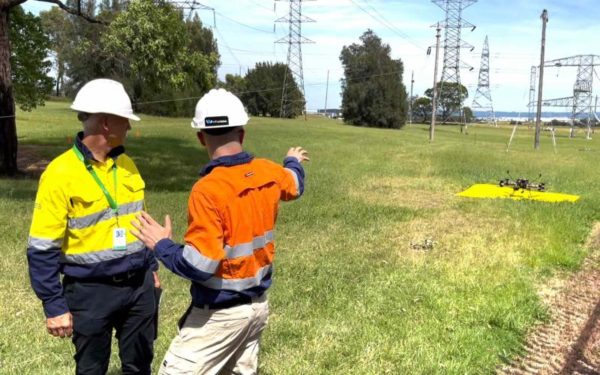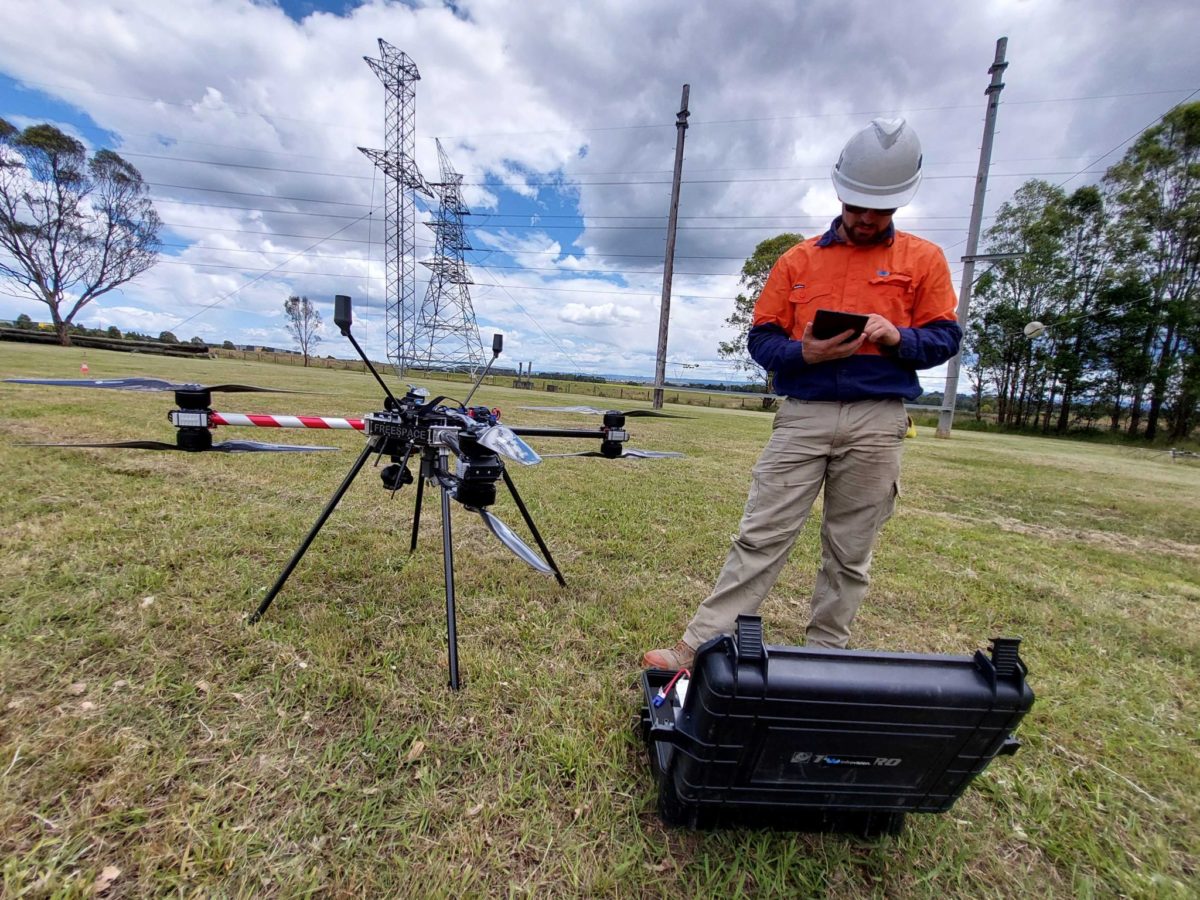Infravision has secured more than $730,000 (USD 495,000) in federal funding to accelerate the development of its Next Generation Line Monitoring System which will provide network operators with real-time microclimate data, potentially unlocking extra network capacity and supporting more renewable energy by maximising the use of existing transmission lines.
The Australian Renewable Energy Agency (ARENA) has awarded Sydney-based Infravision $732,493 to test and trial its line-monitoring technology which is to be deployed on selected transmission lines in Transgrid’s network in New South Wales (NSW).
Infravision’s line-monitoring system consists of a sensor stack that can be installed by drone on transmission lines to provide real-time information about environmental factors such as wind and high temperatures, and any sagging of conductors, which can affect capacity.
Transgrid Executive General Manager of Network Marie Jordan said the data collected by the sensors can be used to calculate a dynamic line rating (DLR) that provides a more accurate and responsive measurement of transmission capacity, allowing higher volumes of electricity to be safely dispatched when conditions are suitable.
“This is clever technology which provides real-time data we can use to ensure transmission lines are operating as effectively as possible for consumers,” she said. “This system enables us to receive data in real time which can be used to calculate a dynamic line rating to determine if more electricity can be dispatched along a line in favourable conditions when it’s safe to do so.”

Image: ARENA
Currently, most transmission operators use static line ratings, which make assumptions to ensure lines can always operate safely, without knowledge of actual environmental conditions affecting the line.
By calculating DLR using real-time, real-world conditions, Jordan said transmission operators will be able to determine when it is safe to dispatch higher volumes of electricity on existing infrastructure.
“Increasing capacity by maximising existing infrastructure means we can optimise our existing assets with real-time information and support the transition to renewable energy,” she said.
ARENA Chief Executive Offcier Darren Miller said Infravision’s technology has the potential to reduce the need for new transmission infrastructure and help accelerate the electricity transition.
The Australian Energy Market Operator (AEMO) has, in the 2022 Integrated System Plan, identified $12.7 billion of new transmission projects required to underpin the transition to renewable energy over the next decade.
“The electricity transition is going to require new generation and transmission on a massive scale. Infravision’s integrated dynamic line rating solution can help get the most out of existing transmission lines,” Miller said.
“Allowing an increased flow of electricity through existing assets reduces the need for new infrastructure, keeping down costs for consumers and network operators.”
Infravision said it is continuing to develop its line monitoring system and expects to install the first sensor units later this year. Transgrid said the sensors will be in place for a 12-month evaluation period during which it will assess a potential grid-scale rollout of the technology.
This content is protected by copyright and may not be reused. If you want to cooperate with us and would like to reuse some of our content, please contact: editors@pv-magazine.com.









By submitting this form you agree to pv magazine using your data for the purposes of publishing your comment.
Your personal data will only be disclosed or otherwise transmitted to third parties for the purposes of spam filtering or if this is necessary for technical maintenance of the website. Any other transfer to third parties will not take place unless this is justified on the basis of applicable data protection regulations or if pv magazine is legally obliged to do so.
You may revoke this consent at any time with effect for the future, in which case your personal data will be deleted immediately. Otherwise, your data will be deleted if pv magazine has processed your request or the purpose of data storage is fulfilled.
Further information on data privacy can be found in our Data Protection Policy.